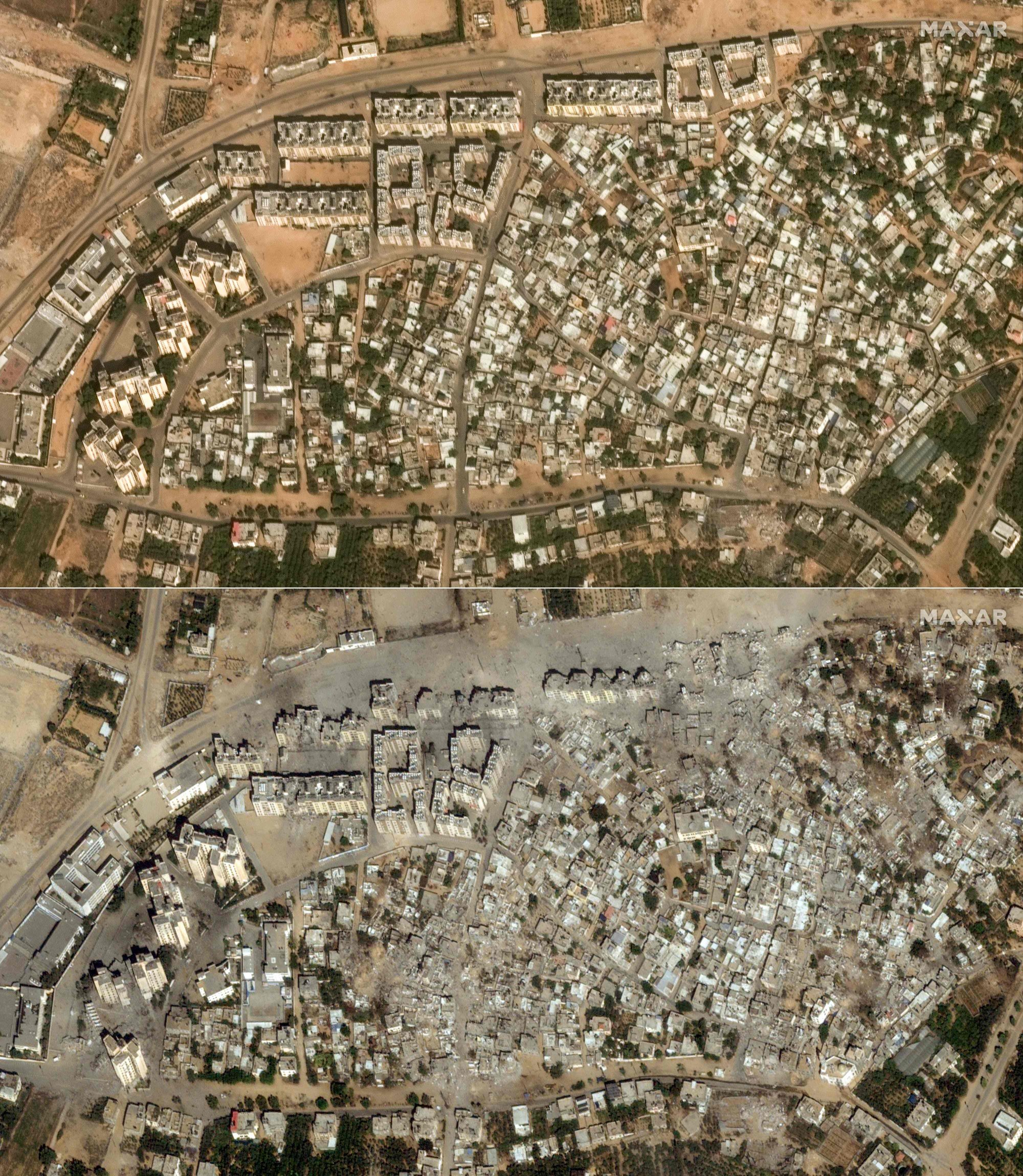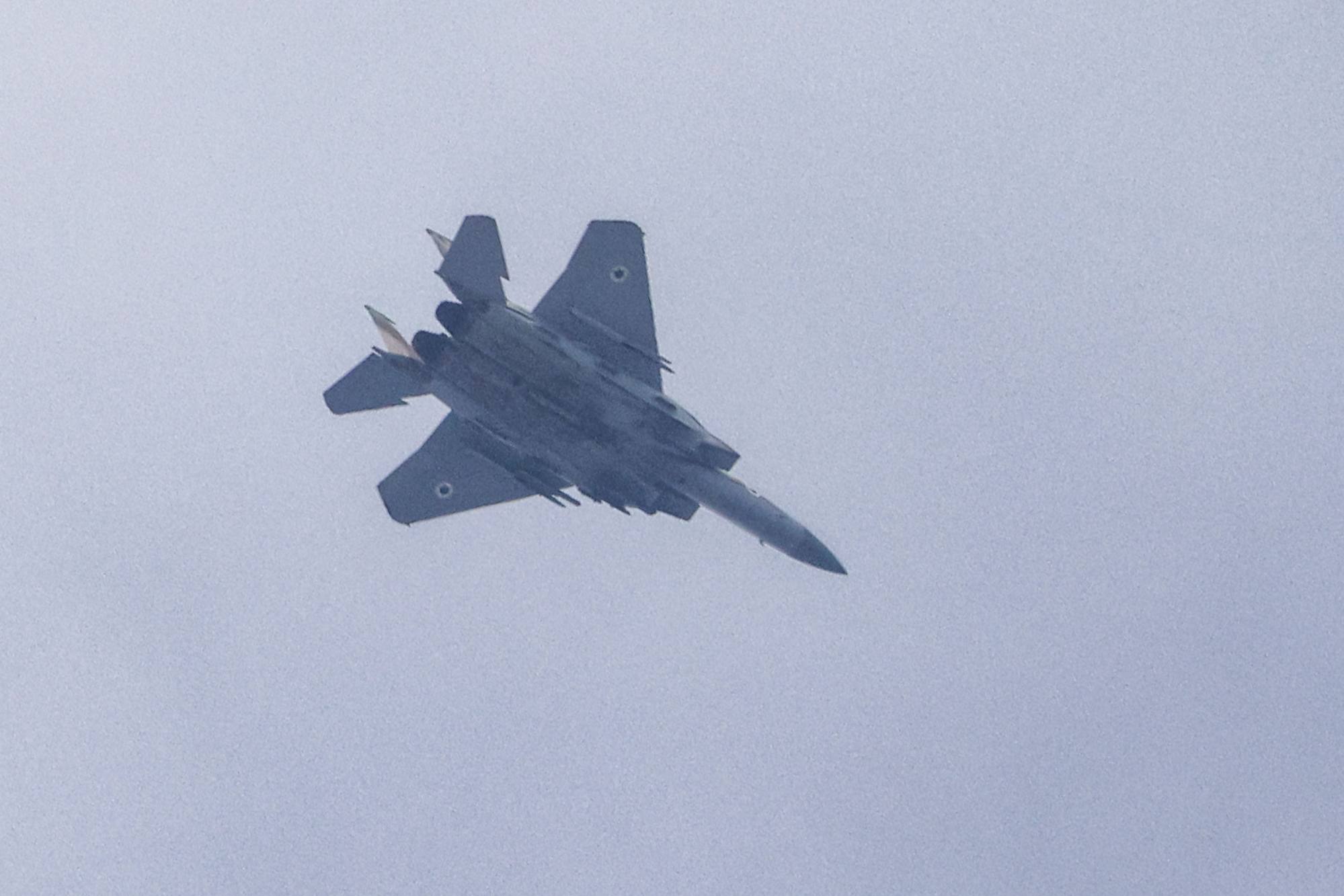The overall number of deaths far exceeds the combined toll of all four previous wars between Israel and Hamas, estimated at around 4,000.
More than 1,400 people in Israel, mostly civilians, were slain during the initial Hamas attack, according to the Israeli government. Hamas is holding at least 224 captives inside Gaza, including men, women, children and older adults.
The air strikes have flattened entire neighbourhoods, causing a level of death and destruction unseen in the last four wars between Israel and Hamas.
‘Viet Cong times 10’: underground warfare awaits Israeli troops in Gaza
‘Viet Cong times 10’: underground warfare awaits Israeli troops in Gaza
Over a million people have fled their homes, with many heeding Israeli orders to evacuate to the south, despite continuing Israeli strikes across the sealed-off territory.
The humanitarian crisis sparked by the war and the Israeli siege has sparked protests across the region, and more demonstrations were expected later Friday after weekly Muslim prayers.
The military said ground forces raided inside Gaza, striking dozens of militant targets over the past 24 hours.
It said aircraft and artillery bombed targets in Shijaiyah, a neighbourhood on the outskirts of Gaza City that was the scene of a bloody urban battle in the 2014 Gaza war.
The damage to Gaza from nearly three weeks of bombardment showed in satellite photos of several locations taken before the war and again in recent days.

Entire rows of residential buildings simply disappear in the photos, reduced to smears of dust and rubble.
A complex of 13 high-rises by the sea was pounded to dust near Gaza City’s al-Shati refugee camp, leaving only a few tottering bits of facade.
Just down the street, hardly anything remained in what had been a neighbourhood of low-built homes on winding lanes, according to the photos by Maxar Technologies.
How does Gaza’s Ministry of Health calculate war death toll?
How does Gaza’s Ministry of Health calculate war death toll?
The military says it only strikes militant targets and accuses Hamas of operating among civilians in an attempt to protect its fighters. The Israeli military said an air strike killed one of two masterminds of the October 7 massacre, Shadi Barud, the head of Hamas’ intelligence unit.
Palestinian militants have fired thousands of rockets into Israel since the war began.
Hamas’ military wing said Thursday that Israeli bombardment has so far killed about 50 of the hostages. There was no immediate comment from Israeli officials, who have denied previous, similar claims.

The conflict has threatened to ignite a wider war across the region.
Hezbollah, an Iranian-backed ally of Hamas in Lebanon, has repeatedly traded fire with Israel along the border. The United States has sent two aircraft carrier strike groups to the region, along with additional fighter jets and other weaponry and personnel, in part to deter Iran and its allies from entering the war on the side of Hamas.
Israel has vowed to crush Hamas’ capacity to govern Gaza or threaten Israel again but also says it doesn’t want to reoccupy the territory, from which it withdrew soldiers and settlers in 2005.
That could prove a daunting challenge, since Hamas is deeply rooted in Gaza, with political and charity organisations as well as a formidable armed wing.
Benny Gantz, a retired general and a member of Israel’s war Cabinet, said Thursday that any possible ground offensive would be only “one stage in a long-term process that includes security, political and social aspects that will take years”.
“The campaign will soon ramp up with greater force,” he added.
Palestinians in Gaza are contending with a worsening humanitarian crisis as supplies of food, medicine and fuel for powering emergency generators run low. The UN agency for Palestinian refugees, which provides basic services to hundreds of thousands of people, including operating schools turned into shelters, has said it may run out of fuel within days.
Gaza’s sole power station shut down for lack of fuel days after the start of the war, and Israel has barred all fuel deliveries, saying it believes Hamas would steal them for military purposes.
About 1.4 million of Gaza’s 2.3 million residents have fled their homes, with nearly half of them crowding into UN shelters. Hundreds of thousands remain in northern Gaza, despite Israel ordering them to evacuate to the south and saying that those who remain might be considered “accomplices” of Hamas.
In recent days, Israel has let more than 70 trucks with aid enter from Egypt, but aid workers say the convoys meet only a tiny fraction of the territory’s mounting humanitarian needs.
Nine Arab countries – including key US allies and nations that have signed peace or normalisation deals with Israel – issued a joint statement Thursday calling for an immediate ceasefire and an end to the targeting and death of civilians.
“The right to self defence by the United Nations Charter does not justify blatant violations of humanitarian and international law,” said the statement, signed by Egypt, Jordan, Bahrain, The United Arab Emirates, Saudi Arabia, Oman, Qatar, Kuwait and Morocco.

